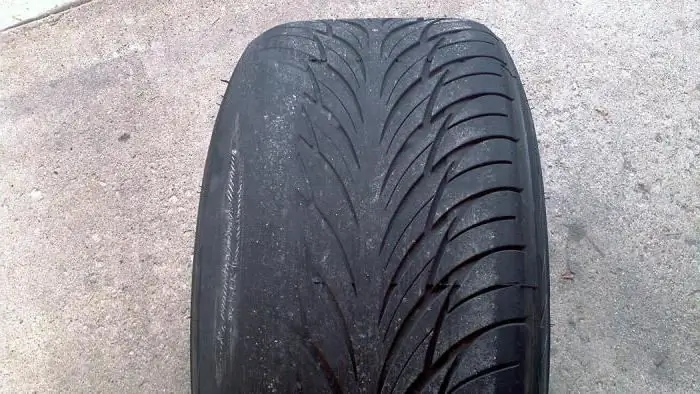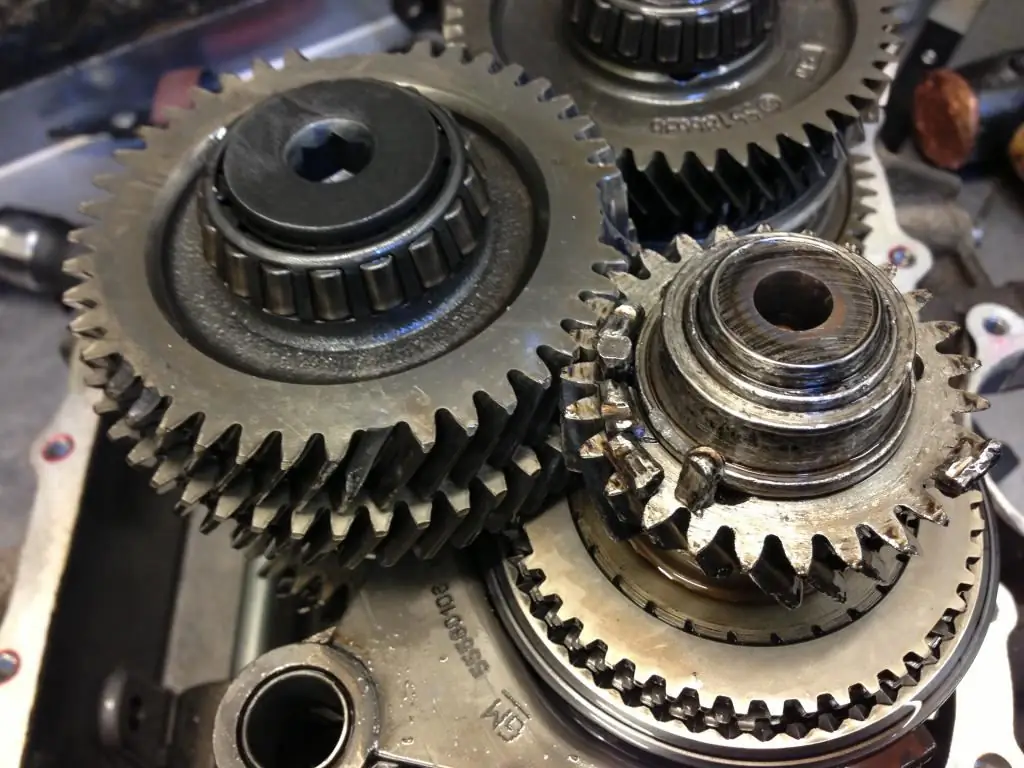2025 Author: Erin Ralphs | [email protected]. Last modified: 2025-01-22 21:14:09
The fifth wheel coupling is one of the main elements used to connect the tractor and trailer. The device is improved in accordance with the development of the automotive industry in the world. Modern modifications are equipped with electronics and automation, which greatly facilitates operation, including reducing the time for coupling and uncoupling.

History of Creation
Presumably, the prototype of the first fifth wheel hitch appeared at the end of the 19th century. At that time, the designers of the well-known company De Dion-Bouton designed a trailer, part of the load from which was transferred to the tractor frame. It is worth noting that the last one was a tricycle with a steam engine.
At that time, few people thought that such a hitch device would become more complex and functional in decades. In modern analogues, pneumatic mechanisms are aggregated with electronics and mechanics. The load safety requirements of these devices require resistance to wear, reliability andserviceability.
Design features
Advanced fifth wheel couplings (SSU) consist of a number of basic elements:
- base plate;
- special mechanism for coupling and uncoupling;
- knot flex block.
The coupling effect is formed after the kingpin on the semi-trailer enters the socket of the main plate, being fixed by locking elements hinged on the fingers. Two types of devices under consideration are now common: one and two-grip. The first option is usually typical for European manufacturers. The second model is inherent in domestic designers. For example, the KamAZ fifth wheel coupling. The difference between the mechanisms is that the paired gripping unit transfers traction to the main elements and adjacent fingers, and in the single version, the load also goes to the massive locking cam block, which is subject only to compressive effects.

Varieties
Types, overall dimensions and technical aspects of the considered mechanisms are determined by international standards. For example, in accordance with regulatory documentation, there are two main types of products:
- Model 50 corrected for 2" kingpin (50.8mm).
- Version 90 - 3.5" (89mm).
The use of standard sizes is affected by the vertical load and the total weight of the semi-trailer or road train. The first option is applied if the mass of the vehicle is notexceeds 55 tons with a vertical load of not more than 20 tons. In other cases, it is advisable to use the second type of equipment.
In some foreign variations, a quick reconfiguration from one standard size to another analogue is provided. Among other characteristics, they consider the height, which determines the vertical size and the reduced load, which reflects the strength parameters of the node.

Fifth wheel flex
The index of flexibility of the device under consideration depends on three levels of freedom of movement:
- Turning the semi-trailer around the kingpin vertical.
- Swing back and forth in the longitudinal direction with an angle of at least 11 degrees.
- Transverse slopes to the right and left with an amplitude of no more than three degrees.
Two of these parameters are provided by the transverse axis and the smoothness of fastening at the junction with the base plate. In addition, new KAMAZ truck tractors and other domestic trucks with devices that have a maximum transverse tilt angle are being produced. Travel range is guaranteed with an additional longitudinal axle.
The result is a prototype gimbal joint that provides new assembly capabilities. For example, a modification of the SK-HD 38/36 G type is applicable for road trains that operate on poor roads or with an increased torsional load on the frame. The maximum angle of inclination of the specified device to the sides reaches seven degrees. The disadvantages of this design include a decrease in stabilityroad trains while moving, the swing of the trailer is limited by special stops or stabilizers.

Fifth wheel service and repair
The vast majority of truck manufacturers are trying to lighten major vehicle components to increase payload and save fuel. The main way to solve the problem is the introduction of innovative technologies and materials. For example, hitch base plates are made by stamping or casting.
In the first version, reinforced steel is used, in the second, nodular graphite is used. In modern automotive industry, the choice is not limited to these materials. Not so long ago, SAF-Holland released an SSU, the base plate of which is made of aluminum alloy. The light fixture is designed for tractors with a maximum load of 20 tons (150 kN). Weight reduction compared to the standard design is about 30 kilograms, while the product does not require lubrication throughout the entire operational period, thanks to the presence of a polymer lining.
It's not a secret that the trailer lubrication technology on the Ural truck tractor and other trucks is directly related to environmental problems. Designers are constantly striving to ensure that fuel and lubricants wastes enter the environment to a minimum. For this, devices with automatic dosage are used, where lubrication is indispensable. For example, Jost presented the new Lube Tronic-5 Point. Here the supply of material is stored in the cartridge,guaranteeing a measured supply of lubricant to several points on the base plate and the locking mechanism. The dosage is monitored by an electronic controller, several operating modes are provided, depending on the mass of the road train and the load. One refill of the cartridge is enough for a year of operation.

Electronic movement
One of the most advanced SSU systems is the Jost KKS electronic system. It fully guarantees the elimination of mechanical disconnection of the hitch and automates the activation of pneumatic units with subsequent vertical movement of the semi-trailer legs. The electronic version is equipped with safety sensors, a universal pneumatic connector and steered axles.
Recommended:
"Kia-Sportage": all-wheel drive, principle of operation, specifications and owner reviews

Off-road car "Kia-Sportage" all-wheel drive: description, operation features, exterior, photo. Car with all-wheel drive "Kia-Sportage": technical characteristics, principle of operation, reviews of owners. Description of the SUV "Kia-Sportage"
The principle of operation of the variator. Variator: device and principle of operation

The beginning of the creation of variable programs was laid in the last century. Even then, a Dutch engineer mounted it on a vehicle. After such mechanisms were used on industrial machines
Adjusting wheel alignment. How to adjust wheel alignment yourself. Wheel alignment stand

Today, any service station offers wheel alignment adjustment. However, car owners can carry out this procedure on their own. So they will learn to better understand and feel their car. Auto mechanics unanimously argue that it is extremely difficult to set up a wheel alignment on your own. Actually it's not like that
Planetary gearbox: device, principle of operation, operation and repair

Planetary gears are among the most complex gear boxes. With a small size, the design is characterized by high functionality, which explains its widespread use in technological machines, bicycles and caterpillar vehicles. To date, the planetary gearbox has several design versions, but the basic principles of operation of its modifications remain the same
Viscous coupling: principle of operation and device

Now crossovers have gained great popularity in the automotive market. They have both full and monodrive. It is connected using a device such as a viscous coupling. The principle of operation of the unit - further in our article

